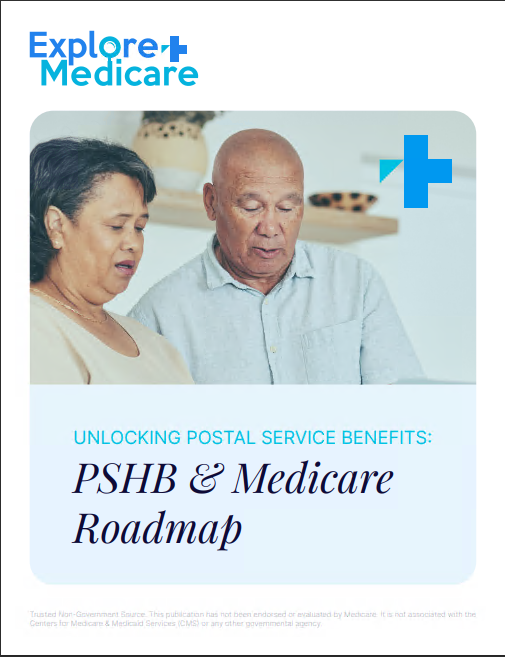Key Takeaways
-
Medicare in 2025 remains structured around four core parts: A, B, C, and D. Each serves a specific function in your health coverage, and understanding what each one does helps you make more informed decisions.
-
While Parts A and B are provided by the federal government, Parts C and D are offered through private insurers under federal guidelines. Your choices here can significantly affect your costs and access to care.
What Part A Covers: The Foundation of Hospital Insurance
Part A is your hospital insurance. In 2025, it continues to cover inpatient care when you’re formally admitted to a hospital. Here’s what it includes:
-
Inpatient hospital stays
-
Skilled nursing facility care (short-term and under specific conditions)
-
Hospice care for terminally ill patients
-
Limited home health care services
You’re eligible for premium-free Part A if you or your spouse paid Medicare taxes for at least 40 quarters (10 years). Otherwise, you may have to pay a monthly premium. The inpatient hospital deductible for each benefit period in 2025 is $1,676.
Important Notes:
-
A benefit period begins the day you are admitted as an inpatient and ends after 60 days without inpatient care.
-
Skilled nursing facility care is only covered after a qualifying three-day inpatient hospital stay.
What Part B Covers: The Doctor and Outpatient Side
Part B is your medical insurance. It handles outpatient services, preventive care, and doctor visits. In 2025, this includes:
-
Physician services
-
Outpatient hospital services
-
Lab tests and X-rays
-
Durable medical equipment (DME)
-
Preventive services (e.g., flu shots, cancer screenings)
-
Mental health services (outpatient)
Part B has a monthly premium, which is $185 in 2025 for most people. You also pay an annual deductible of $257. After meeting the deductible, you typically pay 20% of the Medicare-approved amount for most services.
Keep in Mind:
-
Higher-income beneficiaries may pay more based on income-related monthly adjustment amounts (IRMAA).
-
Enrollment in Part B is optional, but delaying it without other coverage could result in a late enrollment penalty.
What Part C Does: A Different Way to Get Your Medicare
Part C is also known as Medicare Advantage. In 2025, it continues to provide an alternative to Original Medicare (Parts A and B). These plans must offer at least the same coverage as Original Medicare but often include extra benefits.
Medicare Advantage plans typically bundle:
-
Part A (hospital)
-
Part B (medical)
-
Often Part D (prescription drugs)
-
Additional benefits like vision, dental, hearing, and wellness programs
These plans are offered through private insurers approved by Medicare. While monthly premiums vary, you still have to pay your Part B premium in addition to any cost set by the plan. Out-of-pocket costs also vary by plan but are capped annually. In 2025, the maximum out-of-pocket limit for in-network services is $9,350.
Things to Know:
-
You must be enrolled in both Part A and Part B to join a Medicare Advantage plan.
-
Plans may have provider networks; you might need to see in-network providers for full coverage.
-
Many plans include prescription drug coverage, which could eliminate the need for separate Part D coverage.
What Part D Covers: Prescription Drug Benefits
Part D is the Medicare benefit that helps pay for prescription drugs. In 2025, this part includes several major changes to enhance drug affordability.
Coverage includes:
-
Prescription medications categorized by plan formularies
-
Vaccines not already covered under Part B
You must enroll in a Part D plan if you want this coverage, either as a standalone plan (if you have Original Medicare) or bundled within a Medicare Advantage plan.
2025 Updates to Know:
-
The Part D deductible is capped at $590.
-
Once your out-of-pocket costs reach $2,000, you enter the catastrophic phase, and the plan pays 100% of covered drugs for the rest of the year.
-
Enrollees can opt into a new monthly payment program, letting you spread your out-of-pocket drug costs over the year instead of paying all at once.
Enrollment Periods and When to Make Decisions
Making timely Medicare decisions is essential. Here are the primary enrollment periods in 2025:
Initial Enrollment Period (IEP)
-
Lasts for 7 months: 3 months before, the month of, and 3 months after you turn 65.
-
You should enroll during this time to avoid penalties and gaps in coverage.
General Enrollment Period (GEP)
-
Runs from January 1 to March 31.
-
Used if you missed your IEP. Coverage begins July 1 and late penalties may apply.
Annual Enrollment Period (AEP)
-
October 15 to December 7.
-
You can switch or drop Medicare Advantage or Part D plans. Changes take effect January 1.
Medicare Advantage Open Enrollment Period (MA OEP)
-
January 1 to March 31.
-
If enrolled in a Medicare Advantage plan, you can switch to another or return to Original Medicare.
Additional Considerations for 2025
Medicare in 2025 introduces improvements aimed at lowering costs and improving access. Some added points to keep in mind:
-
Insulin costs are capped at $35 per month in all Part D and Medicare Advantage plans with drug coverage.
-
The Mid-Year Notification of Unused Benefits will be sent between June 30 and July 31 to help you take advantage of available benefits.
-
The Part D coverage gap, also known as the “donut hole,” has been eliminated.
These enhancements aim to make Medicare more predictable and affordable, especially for those who rely on regular prescriptions and specialized care.
Understanding Your Choices Can Shape Your Coverage
Understanding what each Medicare part covers in 2025 helps you make smarter healthcare decisions. Part A and Part B form the base. Part C offers an all-in-one alternative, and Part D adds drug coverage. How you mix and match these depends on your budget, health needs, and provider preferences.
If you’re not sure which combination works best for you, speak with a licensed agent listed on this website. They can walk you through your options and help you create a Medicare setup that fits your lifestyle.









